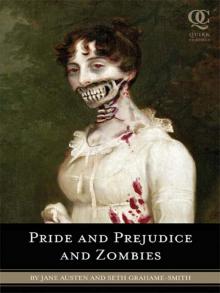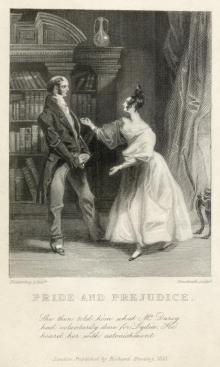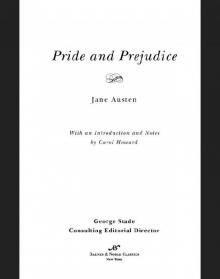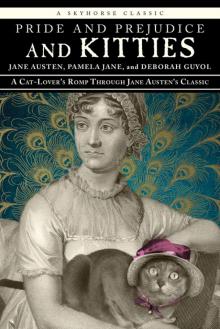- Home
- Jane Austen
Lady Susan, the Watsons, Sanditon
Lady Susan, the Watsons, Sanditon Read online
CONTENTS
Introduction
Further Reading
Social Background
A Note on the Text
LADY SUSAN
THE WATSONS
SANDITON
Notes
Chronology
LADY SUSAN . THE WATSONS . SANDITON
JANE AUSTEN was born on 16 December 1775 at Steventon, near Basingstoke, the seventh child of the rector of the parish. She lived with her family at Steventon until they moved to Bath when her father retired in 1801. After his death in 1805, she moved around with her mother; in 1809 they settled in Chawton, near Alton, Hampshire. Here she remained, except for a few visits to London, until May 1817, when she moved to Winchester to be near her doctor. There she died on 18 July 1817.
Jane Austen was extremely modest about her own genius, describing her work to her nephew, Edward, as 'the little bit (two inches wide) of ivory, on which I work with so fine a brush, as produces little effect after much labour'. As a girl she wrote stories, including burlesques of popular romances. Her works were published only after much revision, four novels being published in her lifetime. These are Sense and Sensibility (1811), Pride and Prejudice (1813), Mansfield Park (1814) and Emma (1816). Two other novels, Northanger Abbey and Persuasion, were published posthumously in 1818 with a biographical notice by her brother, Henry Austen, the first formal announcement of her authorship. Persuasion was written in a race against failing health in 1815-16. She also left two earlier compositions, a short epistolary novel, Lady Susan, and an unfinished novel, The Watsons. At the time of her death, she was working on a new novel, Sanditon, a fragmentary draft of which survives.
MARGARET DRABBLE was educated at the Mount School, York, and Newnham College, Cambridge. She has published fourteen novels, including The Millstone (1965) and The Peppered Moth (2001), and biographies of Arnold Bennett and Angus Wilson. She is the editor of The Oxford Companion to English Literature (fifth edition, 1985; sixth edition, 2000). She is married to the biographer Michael Holroyd.
JANE AUSTEN
LADY SUSAN
*
THE WATSONS
*
SANDITON
EDITED WITH AN INTRODUCTION BY MARGARET DRABBLE
PENGUIN BOOKS
PENGUIN BOOKS
Published by the Penguin Group
Penguin Books Ltd, 80 Strand, London WC2R 0RL, England
Penguin Putnam Inc., 375 Hudson Street, New York, New York 10014, USA
Penguin Books Australia Ltd, 250 Camberwell Road, Camberwell, Victoria 3124, Australia
Penguin Books Canada Ltd, 10 Alcorn Avenue, Toronto, Ontario, Canada M4V 3B2
Penguin Books India (P) Ltd, 11 Community Centre, Panchsheel Park, New Delhi - 110 017, India
Penguin Books (NZ) Ltd, Cnr Rosedale and Airborne Roads, Albany, Auckland, New Zealand
Penguin Books (South Africa) (Pty) Ltd, 24 Sturdee Avenue, Rosebank 2196, South Africa
Penguin Books Ltd, Registered Offices: 80 Strand, London WC2R 0RL, England
www.penguin.com
This edition first published 1974
Reprinted with a new Chronology and Further Reading 2003
Editorial material copyright (c) Margaret Drabble, 1974,2003
Chronology copyright (c) Claire Lamont, 1995,2003
All rights reserved
ISBN: 978-0-141-90790-1
INTRODUCTION
THERE are some great writers who wrote too much. There are others who wrote enough. There are yet others who wrote nothing like enough to satisfy their admirers, and Jane Austen is certainly one of these. There would be more genuine rejoicing at the discovery of a complete new novel by Jane Austen than any other literary discovery, short of a new major play by Shakespeare, that one can imagine. As there will be no such discovery, her readers will have to satisfy themselves with re-reading her six masterpieces (and it is generally agreed that they bear re-reading exceptionally well), and with her lesser and unfinished works.
This volume contains one finished novel, Lady Susan, which was not published in her lifetime, and two unfinished fragments, The Watsons and Sanditon. They cover the three periods of her writing life: Lady Susan belongs to the first period, when she was writing versions of what were to be Pride and Prejudice, Sense and Sensibility and Northanger Abbey: The Watsons belongs to the unhappy and, on the whole, silent middle period, when the Austen family had moved from Steventon, their family home, to Bath: and Sanditon was the last work she ever wrote, interrupted by her death and thus concluding the last period which produced Mansfield Park, Emma and Persuasion. Obviously these fragments from a major writer who died young (she was forty-two when she died) would have been of interest as literary records and curiosities, even if they had been of little intrinsic value, but as it happens they are all of them of high quality, well worth reading for their own sakes, and for pleasure as well as study. It is frustrating not to know precisely how the two later pieces would have ended, but they are enjoyable and suggestive in the form in which we have them, and have given rise to much interesting speculation, as well as to several attempts at sequels.
It is impossible to know whether or not she would have wanted them published. She was a private and modest person, and even when fame and recognition came her way, she did not move a step to meet them, politely refusing invitations to meet other celebrities, and continuing in her own quiet domestic circle. Unlike Charlotte Bronte, who craved for recognition and excitement, and found herself temperamentally unable to cope with them when she got them, Jane Austen seems to have been secure and confident in her choice of privacy. Was she aware of the enduring quality of her own works, and of the reputation she would enjoy? It is impossible to say. She certainly cared deeply about her novels, was excited by their publication, and involved in their fate: she refers to them several times as her 'children'. But one suspects that she was morally incapable of the kind of arrogance that would have let her think of herself as a great or important writer, and that she would have been surprised to see the kind of respect that posterity would pay not only to her novels, but also to her letters, her Juvenilia, her doggerel verses. Even her own nephew, in a highly laudatory account of her, refers to Walter Scott as 'a greater genius than my aunt', a judgement which few would now endorse. So the possibility that people might want to read her rejected and unfinished works can hardly have occupied her mind.
The decision to print these three pieces was taken by her nephew, James Edward Austen-Leigh. It was not taken lightly, for his half-sister Anna tried to dissuade him, but he judged that the public should be allowed to read them, and in the second edition of his Memoir of Jane Austen, published in 1871, he included the texts of Lady Susan and The Watsons, and a fairly lengthy account, with full quotations, of Sanditon. The full text of Sanditon, edited from the manuscript by R. W. Chapman, was first published in 1925.
LADY SUSAN
Lady Susan is the earliest and possibly the least satisfactory of the three. The text is taken from an untitled manuscript transcribed in 1805, but the manuscript is a fair copy, with very little correction and revision, and other evidence suggests that the novel was composed at least ten years earlier, probably between 1793-4. (See B. C. Southam, Jane Austen's Literary Manuscripts, Chapter 3.) This was the period when Jane Austen was about to start working on her first version of Sense and Sensibility, which was called Elinor and Marianne, and which was also, like Lady Susan, written in letter form. She was at this stage about twenty years old.
Clearly, she liked Lady Susan well enough to make a fair copy of it, and not well enough to pursue its publication. Perhaps she was thinking of publication when she copied it, but none of her novels appea
red until 1811, and by that point she may well have become dissatisfied with it again.
One could reasonably conjecture that one of her dissatisfactions sprang from the form in which she chose to write it. The epistolary novel had been popular in the eighteenth century, and was very much a living convention when she tried to use it, but it did not really suit her talents - witness the fact that her second draft of Sense and Sensibility was in the third-person narrative mode which she was to use from then on. The letter form is an artificial convention, and she felt its limitations: stylistically, she was a far from conventional writer, and as Virginia Woolf pointed out, she had the courage and the originality to find her own way of expressing herself - her own subject matter, her own plots, her own prose. She admired Richardson greatly, all of whose works are written in letters, and she enjoyed Fanny Burney, but their method does not come naturally to her: she points out in her Conclusion, 'This correspondence, by a meeting between some of the parties and a separation between the others could not, to the great detriment of the Post Office revenue, be continued longer', which indicates her sense of unreality in keeping the game up. Many of her earliest works are skits or parodies of forms that seemed to her ridiculous, and the epistolary form is in many ways open to ridicule, especially from an essentially naturalistic writer like herself. Much as she admired Richardson, she must at times have felt amused by some of the devices resorted to in order to keep the letters flowing from correspondent to correspondent: and surely she must have smiled at the point when that indefatigable letter-writer, Clarissa Harlowe, admits that she has just been forced to surrender to her captors 'a half-pint ink bottle' which had been seen in her closet. A half pint would have ill sufficed Clarissa - luckily she had more ink and six quill pens secreted, and she writes bravely on, through abduction, rape, sickness and death, and the last volume is enlivened by her posthumous missives from beyond the grave.
It was, of course, a great age of letter writing, and as we see from Sanditon, girls set aside a portion of each day for the task. In the absence of telephones and easy transport, long correspondences flourished. So an action narrated entirely through the Post Office would have been far more plausible then than it would today. But even so, other pens were better suited to the technique than Jane Austen's. Many eighteenth-century letter writers elevated the letter almost to an art form - one thinks of Lady Mary Wortley Montagu's letters from the Orient, and Horace Walpole's accounts of contemporary London life and manners. Both these writers wrote as much for posterity as for their friends. Fanny Burney was in many ways a better diarist and letter-writer than she was a novelist: her letters are informal, but they are also witty and stylish and packed with information. Even writers who lived quite out of the world produced some letters of enduring quality: those of William Cowper are particularly charming, full of nothing much - how the ladies were sewing by the fire in the evening, how Puss jumped out of the window, how he would fill in a few hundred years if he lived as long as the ancients. Jane Austen nothingnesses, one might say, and we know she greatly admired Cowper and his quietism: but the letters are finished, graceful, a pleasure in themselves, communicating to an outsider. Of Jane Austen's letters, one cannot say the same. They are essentially private letters, written for the correspondent alone, disappointing if one looks for deeper truths or lasting subtleties. They have, of course, flashes of wit and malice, a few well-known remarks about the art of the novel (working on a small piece of ivory, using three or four families), and a few revealing comments about her own attitudes to herself and her work, but on the whole they are written for the moment, concerned with such ephemeral matters as beef dumplings, partners at balls, sick babies and raspberry bushes. Far from being consciously 'literary' letters, or even bravura displays of informality like Fanny Burney's, they are genuinely informal family documents, incomprehensible without a key to the names of her numerous brothers, sisters-in-law, neighbours, nieces and nephews. She was a prolific but not a great letter writer, and it's not surprising that she turned away from the epistolary novel.
Another possible source of dissatisfaction with Lady Susan lies in the slightly melodramatic nature of its plot, and the excessive wickedness of its heroine, Lady Susan herself. The plot itself is simple. Lady Susan, a clever, beautiful and ruthless widow, is determined that her young daughter should marry a man whom she detests. She herself is busily engaged in trying to attract the attention of her sister-in-law's brother, and trying to preserve the attentions of a previous lover. Finally her machinations are exposed, she loses the brother-in-law, who marries her daughter, and is herself obliged to marry the wealthy simpleton she had intended for her daughter. One can see here one of the stock features of the eighteenth-century plot. As in Tom Jones and Clarissa, we have a young girl who is being forced into a marriage she detests; whose guardians are the very ones to betray her. Frederica is not, it is true, locked into her room by her mother, as Sophia was by Squire Western; she is bullied and coerced by more subtle means. But she does, like Sophia, try to run away, though she only gets two streets away from her boarding school in Wigmore Street. She is not abducted and raped like Clarissa, and her threatened suitor, the foolish and insensitive Sir James Martin, is certainly no Lovelace: nevertheless, her plight is painted as desperate. She has been neglected throughout her childhood, has no friends in the world apart from some Clarkes in Staffordshire, and is terrified of her mother. 'I never saw any creature look so frightened in my life,' writes her aunt, 'as Frederica when [Lady Susan] entered the room.' Lady Susan refers to her as 'a little devil', 'a chit, a child without talent or education', and her determination to get her married is pitiless. 'Frederica shall be Sir James's wife before she quits my house,' she writes. 'She may whimper, and the Vernons may storm; I regard them not.'
This is strong stuff. There is plenty of cruelty in Jane Austen's other works, but most of it is hypocritical in nature rather than overt. And in the other respects too, Lady Susan's character is more extreme than we expect from Jane Austen. She is, for example, a self-declared and unashamed adulteress, fresh, at the beginning of the novel, from an affair with the host of the family in which she has been staying, an affair which she intends to pursue whenever suitable. It has often been pointed out that Jane Austen wrote at a turning point in the morals of the nation - that half of her belongs to the outspoken, coarse eighteenth century, and half to the prudish and discreet nineteenth century. In content as in form, Lady Susan is an eighteenth-century work. There are adulterers, rakes and illegitimate babies in the later novels, but we do not see them in close-up and the most violent events take place offstage. Here, Jane Austen is showing us the mind of a 'wicked woman' in action, from within, an exercise which she was not to attempt again. She was to attempt folly and frivolity and immorality, but never again so directly did she attempt to portray vice. Lady Susan, with her apartment in Upper Seymour Street, her flippant remarks about her friend's husband, her cruelty to her daughter and her ruthless selfishness, is unique in her work. It has been suggested that Jane Austen drew on the character of the mother of her neighbour Mrs Lloyd, a woman called Mrs Craven, in this portrait, and the story of Mrs Craven is a reminder that the ill-treated daughter was not merely a fictitious device for melodramatic novelists. Mrs Craven, a beauty like Lady Susan, had treated her daughters shockingly, locking them up, beating them and starving them, until they ran away from home in desperation and married. Mrs Lloyd's daughters were close friends of Jane Austen, and she must often have heard stories about their wicked grandmother.
She knew about adultery from real life, as well. In 1801 we find her writing very coolly to her sister Cassandra from Bath, describing a ball:
I am proud to say that I have a very good eye at an adulteress, for tho' repeatedly assured that another in the party was the She, I fixed upon the right one from the first... Mrs Badcock and two young women were of the same party, except when Mrs Badcock thought herself obliged to leave them to run round the room after her drunken husban
d. His avoidance, and her pursuit, with the probable intoxication of both, was an amusing scene.
This is more the world of Richardson than the world of Mansfield Park, and Jane Austen's tone is far from any tone that could possibly have been used by Fanny Price.
Which raises, inevitably, the question of what Jane Austen's true tone was, and whether she was denying herself in cutting out the freedom, malice and coarseness represented in Lady Susan. For Lady Susan is not wholly a villain, she is also witty, energetic, intelligent and charming, as even her enemies admit. Many readers have seen in her the expression of something which Jane Austen deliberately repressed or criticized in her later work: the spirit represented by Elizabeth Bennet, Mary Crawford and Emma, which has some of the same qualities, however differently it manifests itself in each. Q. D. Leavis has seen in Lady Susan a forerunner of Mary Crawford, and the suggestion is interesting: both are Londoners, both have more head than heart, both allow their tongues to run away with them, both have moved in 'fast' circles. Certainly, when I first read Lady Susan, at much the same age as Jane Austen was when she wrote it, I felt a sense of admiration for her - admiration for her worldliness, intelligence and vitality. She is Machiavellian, but there is an attractive quality to her plotting: one can hardly blame her for wanting to outwit her jealous sister-in-law, and for wanting to make Reginald de Courcy fall in love with her. 'There is exquisite pleasure in subduing an insolent spirit,' she says, 'in making a person pre-determined to dislike, acknowledge one's superiority.' On one level, this is nothing worse than an outspoken Elizabeth Bennet, taking satisfaction from Darcy's change of heart. It is certainly nothing like as bad as the melodramatic plottings and seductions of Laclos's Les Liaisons dangereuses, which may also lie behind the plot of the novel. Lady Susan is sexually confident, unashamed of her selfishness, and one could argue that some of her more unfeeling remarks (like Mary Crawford's) are merely jokes made for effect - she does not really wish that her friend's tiresome husband should be carried off by the gout, nor that her friend should kill her lover's wife by worrying her into a decline.

 Sense and Sensibility
Sense and Sensibility Persuasion
Persuasion Mansfield Park
Mansfield Park Northanger Abbey
Northanger Abbey Pride and Prejudice and Zombies
Pride and Prejudice and Zombies Pride and Prejudice
Pride and Prejudice Emma
Emma Persuasion (Dover Thrift Editions)
Persuasion (Dover Thrift Editions) Lady Susan
Lady Susan Northanger Abbey (Barnes & Noble Classics)
Northanger Abbey (Barnes & Noble Classics) Lady Susan, the Watsons, Sanditon
Lady Susan, the Watsons, Sanditon Darcy Swipes Left
Darcy Swipes Left Persuasion: Jane Austen (The Complete Works)
Persuasion: Jane Austen (The Complete Works) Mansfield Park (Barnes & Noble Classics Series)
Mansfield Park (Barnes & Noble Classics Series) Sense and Sensibility (Barnes & Noble Classics Series)
Sense and Sensibility (Barnes & Noble Classics Series) The Annotated Sense and Sensibility
The Annotated Sense and Sensibility Pride and Prejudice (Clandestine Classics)
Pride and Prejudice (Clandestine Classics) Persuasion (AmazonClassics Edition)
Persuasion (AmazonClassics Edition) Persuasion (Barnes & Noble Classics Series)
Persuasion (Barnes & Noble Classics Series) Complete Works of Jane Austen
Complete Works of Jane Austen The Watsons and Emma Watson
The Watsons and Emma Watson Northanger Abbey and Angels and Dragons
Northanger Abbey and Angels and Dragons Love and Friendship and Other Early Works
Love and Friendship and Other Early Works Emma (Barnes & Noble Classics Series)
Emma (Barnes & Noble Classics Series) Sanditon
Sanditon Pride and Prejudice (Barnes & Noble Classics Series)
Pride and Prejudice (Barnes & Noble Classics Series) Pride and Prejudice and Kitties
Pride and Prejudice and Kitties The Annotated Northanger Abbey
The Annotated Northanger Abbey Oxford World’s Classics
Oxford World’s Classics Northanger Abbey (Barnes & Noble Classics Series)
Northanger Abbey (Barnes & Noble Classics Series) The Annotated Persuasion
The Annotated Persuasion Emma (AmazonClassics Edition)
Emma (AmazonClassics Edition) The Annotated Emma
The Annotated Emma The Annotated Mansfield Park
The Annotated Mansfield Park The Annotated Pride and Prejudice
The Annotated Pride and Prejudice